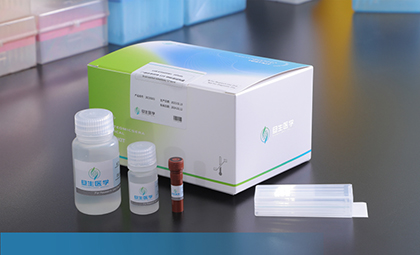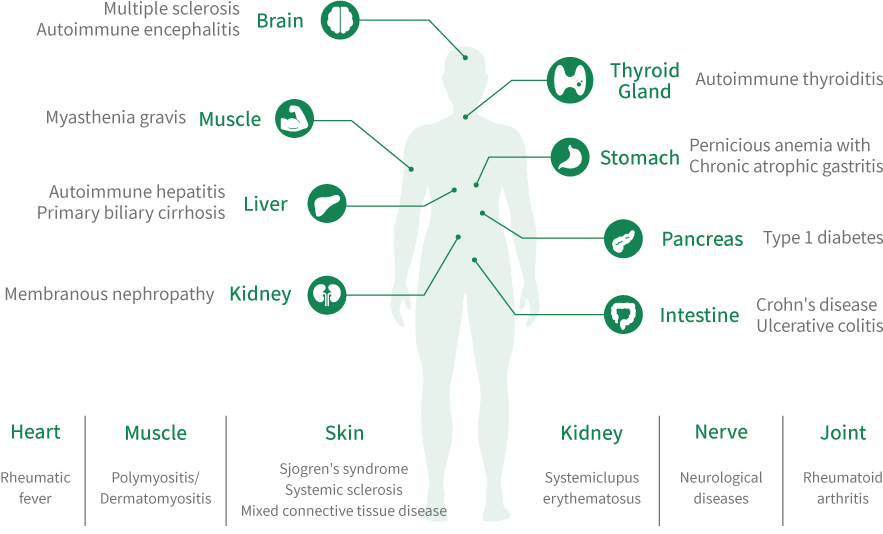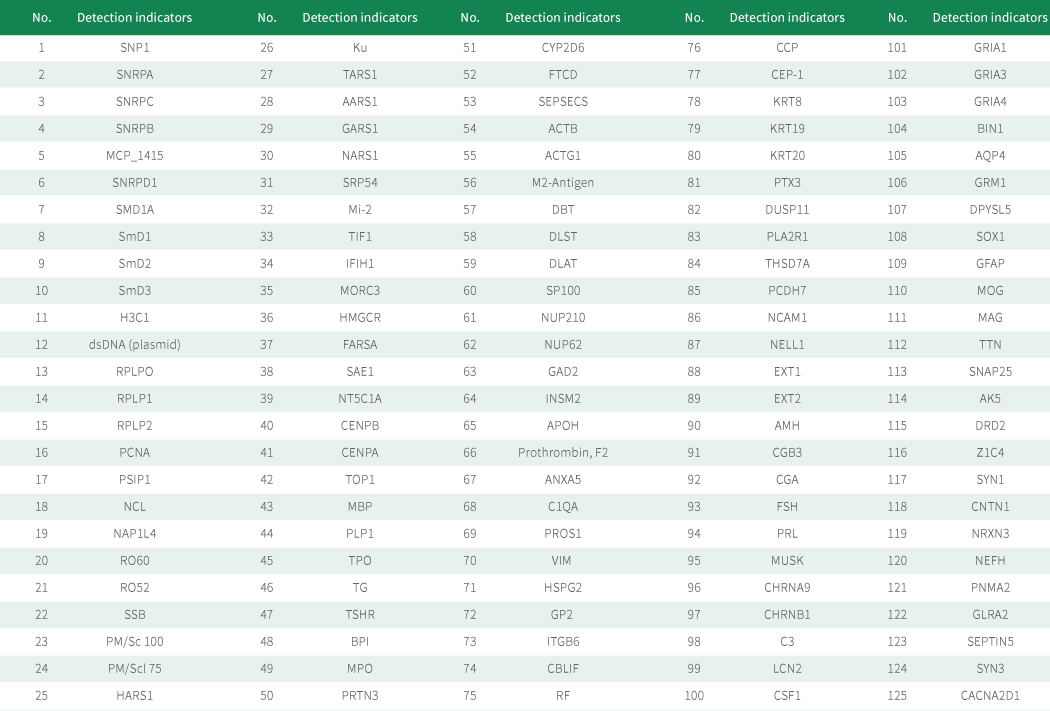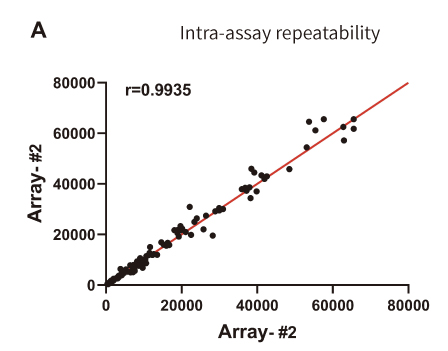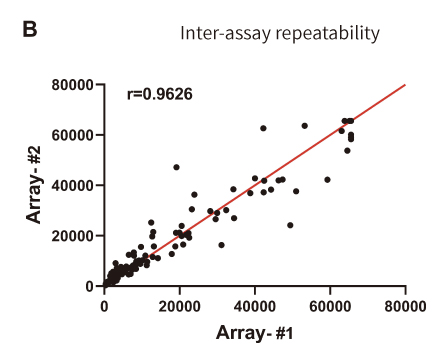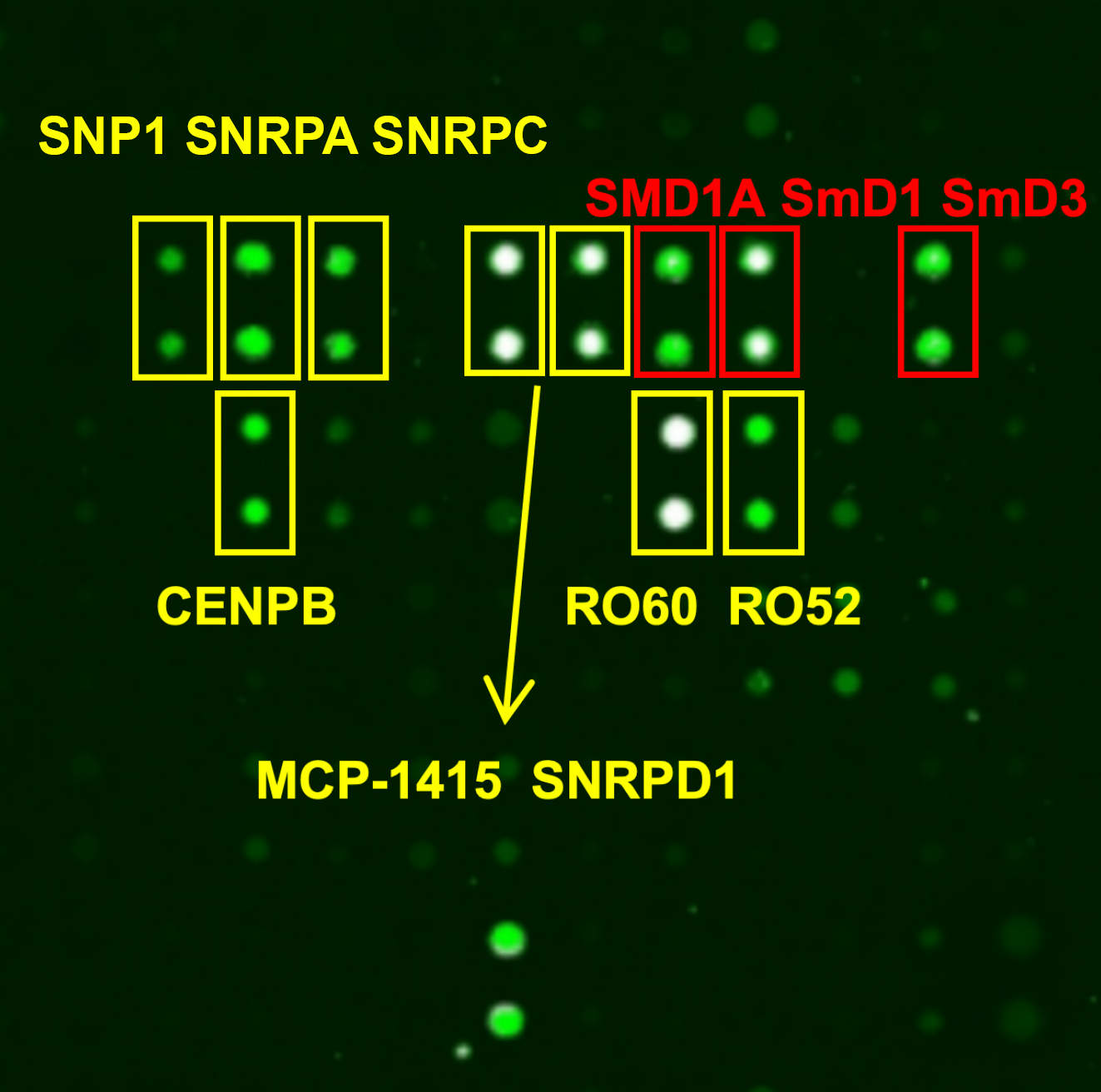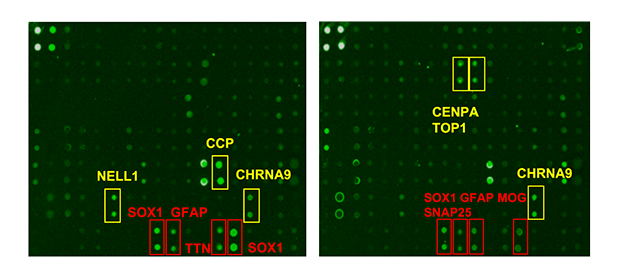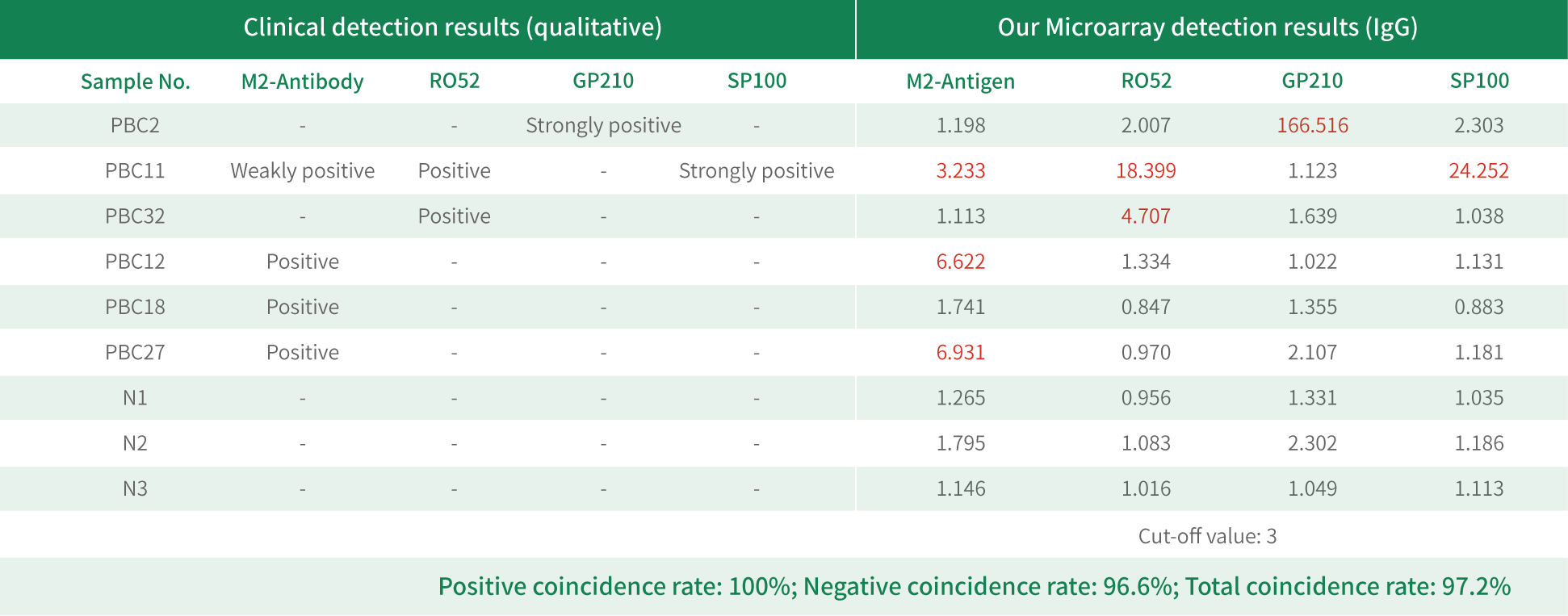The autoimmune disease autoantibody marker multiplex microarray covers 125 autoantibody indicators with clinical guidance value, as well as corresponding positive and negative controls.
It can be widely used for high-throughput detection of autoantibodies in the body fluids of 25 common AID patients, such as rheumatoid arthritis, systemic lupus erythematosus, autoimmune hepatitis, etc. At the same time, it can detect antibody subtypes such as IgM, IgG, IgG1-4, IgA, and IgA1-2.
